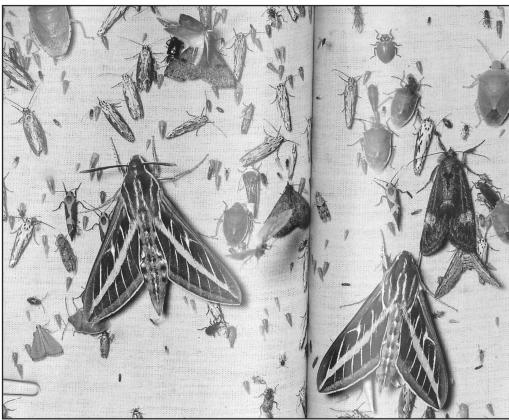You’ll Miss Them When They’re Gone
The most recent copy of the National Geographic magazine (May 2020) shows a photo of several dozen different flying insects taken of a collection screen in Arizona. Then in large print on the cover are the words, “You’ll Miss Them When They’re Gone.” The subtitle on the cover reads, “Insects are disappearing at alarming rates. That could be disastrous for the planet.”
It immediately made me think back a few weeks ago when I had a dead bug on my windshield and what I thought about when I saw it. Years ago, from the time I first started driving and for many years thereafter, it was common, especially if you had been driving at night, to have bugs plastered on your windshield and the grill of your car. These days, it is not rare, but certainly unusual for you to have any dead bugs on your windshield.
The article described a very well documented study in Germany that found a decline in insect biomass of 76% between 1989 and 2016.
Now before those of you who dislike insects in general think this is all good news, you should think about all of the important ecosystem services insects contribute as providers, decomposers, pest control, pollinators and soil maintenance.
Insects provide food for many species of higher animals including birds, bats, reptiles, amphibians, armadillos, and fish, all of which then provide food for higher animal species.
Decomposers degrade dung, dead plants and carrion. Predatory insects control many kinds of insect pests thus reducing the amount of insecticides used every year and the amount contaminating our food supply.
Ninety percent of all flowering plant species, including seven percent of all crop species, depend on pollination by animals, mostly by insects. It was pointed out that, “one out of every three bites of food humans eat relies on animal pollination.”
Finally, insects provide valuable soil service by producing tunnels making the soil more porous and capturing more water as well as adding to the fertility of the soil.
Here are some orders of insects and the number of species in each order that are declining: dragonflies and damselflies—27%, butterflies and moths—36%, bees, wasps and ants—42%, beetles—61% and grasshoppers and crickets—85%.
Why is all of this happening? David Wagner, an entomologist at University of Connecticut, says “We’d expect things to be declining with seven billion people on the planet. In the process of feeding, clothing, housing and transporting themselves, people are altering the planet…mowing down forests, plowing up grasslands, planting monocultures, pouring pollutants into the air…We know we are in a biodiversity crisis.”
Interestingly, insects were among the earliest animals to colonize the land. That was over 400 million years ago—which is 200 million years before the dinosaurs! And we are wiping them out in a matter of decades. The renowned biologist, E.O. Wilson famously said of microorganisms, “They don’t need us but we need them.” He also observed, “If humans were to suddenly disappear, the Earth would regenerate back to the rich state of equilibrium that existed 10,000 years ago. But if insects were to vanish, the environment would collapse into chaos.” Historically, insects have had a very low extinction record as shown by fossil records, which makes these recent observations even more disturbing.
I have been growing a wide variety of native plants for 20 years without any insecticides, and I have never had any native plant die from insect damage. In fact, native plants evolved to be here with native insects—if they had not survived, we wouldn’t have them now.
Readers: Today’s column represents 10 years of columns in the Kerrville Daily Times. I want to thank all of you for your interest and encouragement. I especially want to thank Jeanette Nash, the editor at KDT who has corrected most of my mispunctuations and especially coming up with better titles than I do for all of this time. Thanks also for the other Hill Country papers that have been publishing these columns for the last several years.
A couple of years ago, my aim was to get to 10 years and then to quit writing these columns. Now that I have reached that goal, however, I have decided to continue for as long as I think I am helping people understand our Natural World, and as long as I can think of topics to write about.
We need everyone to understand nature and appreciate man’s interaction with it and to be as good stewards of nature as possible.
Until next time…
Jim Stanley is a Texas Master Naturalist and the author of the books “Hill Country Ecology,” “Hill Country Landowner’s Guide” and “A Beginner’s Handbook for Rural Texas Landowners.” He can be reached at jstmn@ktc.com. Previous columns can be seen at <www.hillcountrynaturalist.org>.


